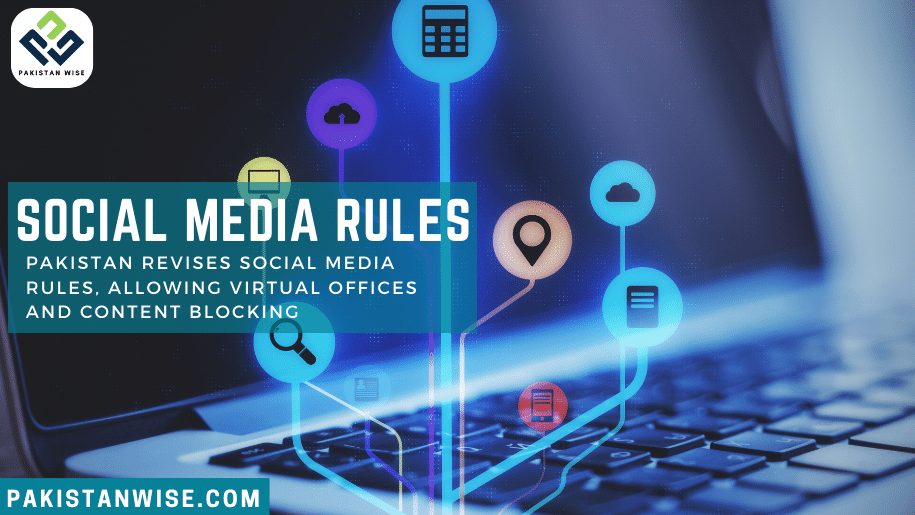The federal information technology czars of Pakistan recently unveiled revised social media rules, marking a shift in the government’s stance towards regulating social media platforms. These revisions offer a middle ground, addressing concerns raised by both domestic stakeholders and social media giants. The new rules permit social media companies to establish virtual offices in Pakistan while emphasizing the blocking of objectionable content. This article explores the key changes in the social media rules and their potential implications.
Revisions to the Social Media Rules
Following extensive backlash and resistance from social media platforms, the federal government of Pakistan decided to amend its approach to regulating these platforms. The Ministry of Information Technology & Telecommunication confirmed that a consensus had been reached on revising the much-criticized Social Media Rules. Although these rules were drafted by the government, they do not require parliamentary oversight but will need to be ratified by the federal cabinet.
One of the significant concessions made by the government is the abandonment of its initial demand for social media companies to establish physical offices in Pakistan, mirroring the approach taken by neighboring India. Instead, after incorporating feedback from the platforms, the government has agreed to allow virtual offices to operate in the country. These virtual offices, however, must remain operational round-the-clock.
Content Blocking and Categorization
The revised rules introduce a categorization system for content, focusing primarily on content blocking. Under the new framework, content is classified into three categories: yellow, red, and others. The yellow category consists of content that is flagged and must be blocked within a 48-72 hour window. Content falling into the red category requires immediate blocking. It remains unclear whether additional prerequisites are attached to these offices or the extent of their jurisdiction.
Response from Social Media Platforms
While the federal government has made efforts to strike a balance, the social media platforms, collectively represented by the Asia Internet Coalition (AIC), have yet to provide an official response to the revised policy changes. Historically, these platforms have vehemently opposed the establishment of localized offices in order to address concerns raised by the government. They argue that the government has resorted to imposing blanket bans on their platforms instead of engaging in dialogue or addressing specific content concerns. Representatives appointed in the country have even faced threats of arrest in the past.
Moreover, social media platforms publish reports on government requests for data. The government claims that it submits data and content removal requests in accordance with local laws and legal obligations. However, platforms independently assess these requests and decide whether to comply based on their assessment of their broadness or vagueness.
Past Instances of Platform Bans and Reversals
The government’s decision to impose bans on social media platforms like Facebook, YouTube, and Twitter following the May 9 incidents raised questions about its handling of protests. While these bans were implemented, they had little impact on quelling the unrest. In a separate incident, the Pakistan Telecommunication Authority (PTA) banned the globally-contributed information database, Wikipedia. Prime Minister Shehbaz Sharif subsequently established a ministerial committee to review the matter, leading to the unblocking of the website. The Prime Minister’s office acknowledged that a blanket ban was an unsuitable approach and that the unintended consequences outweighed any benefits.
Conclusion
Pakistan’s revised social media rules represent a departure from the government’s previous demands and demonstrate a willingness to engage with social media platforms to find a mutually acceptable solution. The introduction of virtual offices instead of physical ones addresses concerns raised by the platforms, while the categorization system for content enables a more streamlined approach to content blocking. However, the response from the social media platforms remains uncertain. The impact of these rules on the country’s digital landscape and freedom of expression will unfold as the government moves towards implementing the revised regulations.

